The temperature gauge of your vehicle is responsible for keeping the vehicle’s engine well off. Any issue with the temperature gauge might make the coolant excessively cold even if the engine is hot. In such a situation, if you’re wondering ‘why my car temperature gauge stays on cold,’ well, you’re not the only one.
In most cases, failure of the temperature sensor is mainly responsible for such malfunction in the temperature gauge. But there are also some other issues that can cause your temperature gauge to stay cold.
This article can be your savior in finding the actual reasons why the temperature gauge of your car stays cold. Besides, you will also learn about some easy techniques to test and fix the temperature gauge in case any malfunction occurs.
Mechanism of The Temperature Gauge
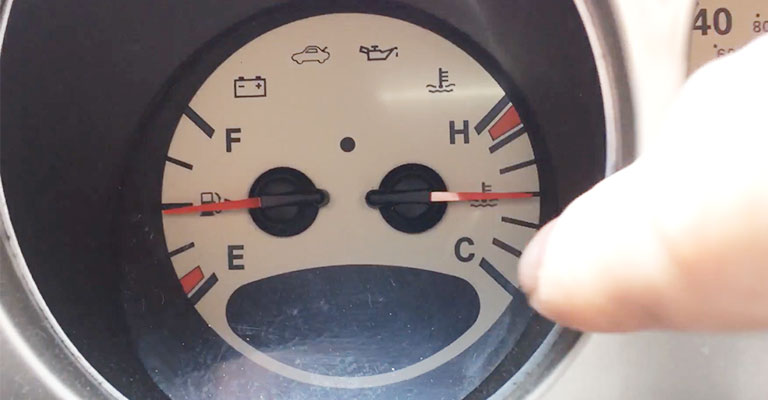
A temperature gauge of any vehicle monitors the temperature of your engine, indicating whether the engine is warm or cold. It is essential to know the actual condition of the engine so that you can easily detect any malfunction by reading the gauge.
Some decades earlier, mechanical gauges were used in vehicles that were replaced by electrical ones. The main difference between them was the bourdon tube attached to the gauge on one side and the coolant on the other.
Generally, the temperature gauge is located near the vehicle dash and needs an electric circuit and a sending unit for detecting the temperature. It works as a voltmeter and reads the temperature by measuring the voltage difference.
The electric circuit remains grounded on the vehicle engine. When the engine is cold, the variable resistance connected with the sending unit becomes high and passes a low current. As a result, the bimetallic pin of the gauge doesn’t heat up, and the gauge reads low temperature.
On the other hand, the variable resistance becomes low when the engine is warm. So, a high current passes through, and the heated-up bimetallic pin detects the high temperature on the gauge.
The temperature gauge uses a light indicator to show the temperature change of the engine. But nowadays, vehicles have digital gauges that show the actual temperature precisely.
Why The Temperature Gauge Stays Cold
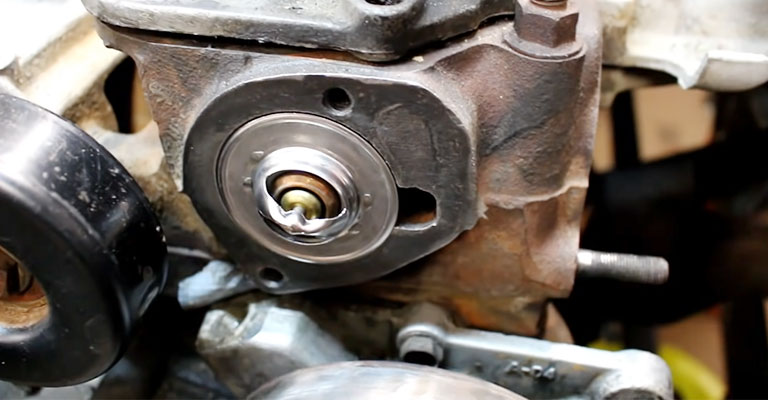
If you pay close attention to the temperature change of your vehicle’s engine, you may notice several glitches responsible for the temperature gauge malfunctioning.
It is more than necessary to find the actual reasons so that it becomes easier to take measures according to the underlying causes. The most possible reasons are stated here.
Failure of The Temperature Gauge
If the temperature gauge itself is showing issues while detecting the temperature of the engine, you might notice the gauge is staying cold. Bad soldiering inside the gauge or a bad cluster can create problems with the temperature indication.
When the electric circuit of the gauge or the variable resistance is not working well, the gauge can’t detect the actual temperature of the engine.
Besides, the bimetallic spring attached to the temperature gauge often gets rusted and can’t get heated up with the current flow. As a result, the temperature gauge stays cold even if the engine is hot.
Faulty Temperature Sensor
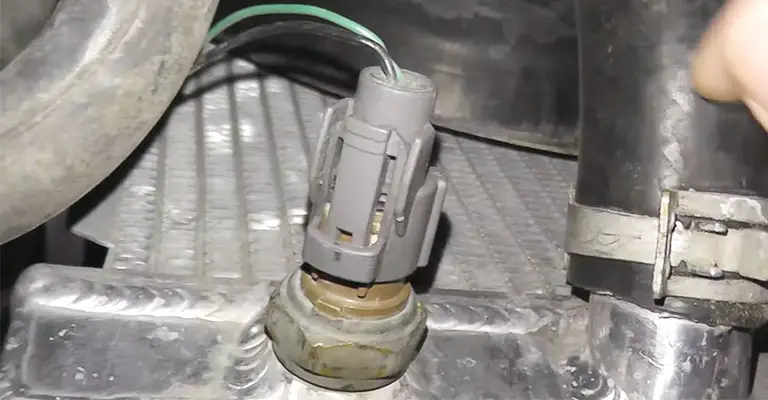
Most vehicle owners experience the malfunction of the temperature gauge because of any defect in the temperature sensor. The main job of the sensor is to detect the temperature of the coolant and send the value to the gauge to display.
If the sensor fails to detect the actual value of the coolant temperature, it will send the wrong information to the temperature gauge. As a result, the temperature gauge will display the incorrect value, and you might notice the value is low, indicating a cold engine.
Some vehicles might contain two temperature sensors attached to the temperature gauge and to the control unit. Any defect in either of the two sensors can lead to the wrong temperature indication of the engine.
Issues with The Thermostat
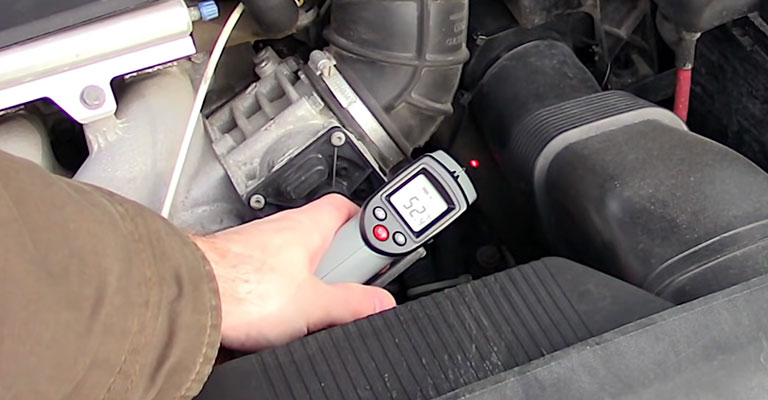
A thermostat is located in a vehicle’s cooling system, which maintains the optimum amount of coolant flowing into the radiator. When the temperature of the coolant is high, the thermostat allows it to flow to the radiator so that the temperature drops down to a safe level.
Any defect in the thermostat prevents the vehicle engine from operating within the ideal temperature. As a result, the engine can get too cold or too hot, which can badly affect the performance of the vehicle.
So, if you notice the temperature gauge is staying cold and showing wrong readings, there is a huge possibility that the vehicle might contain a bad thermostat.
Malfunction of The Control Unit
The ECU (engine control unit) maintains the entire system of a vehicle and ensures the smooth performance of the combustion engine. It is a very rare situation when the control unit of a vehicle is responsible for the wrong temperature gauge reading.
When the temperature of the engine is received by the control unit, it sends data to the cluster. But if there are defects in the unit, the value of the temperature reading might be wrong.
A malfunction of the control unit might also affect the communication between the temperature sensor and the gauge.
In this case, you may notice that the temperature gauge indicates a low temperature of the vehicle engine.
Damaged Wiring And Connectors
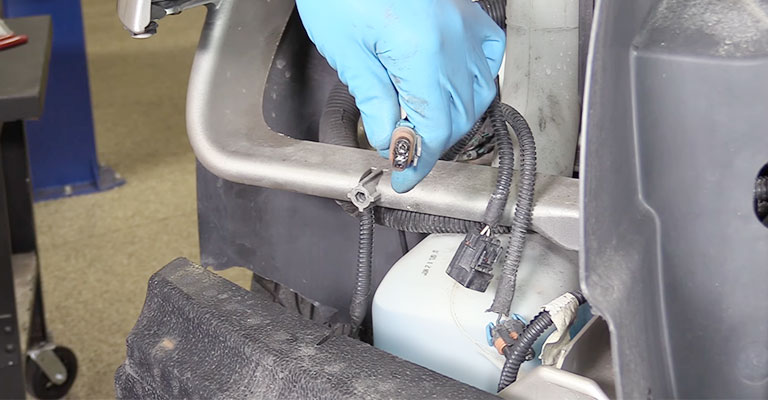
The wiring system associated with the temperature gauge, temperature sensor, and thermostat work like connectors. The signals regarding the temperature of the engine flow from the sensors to the gauge through this wiring system that allows the gauge to display the actual temperature.
Faulty or broken wiring systems can obstruct communication between the sensor and the temperature gauge. Often the connectors and wires become rusty and damaged after being used for a long time.
These damaged wires create disruption while carrying signals, which can make the temperature gauge stay cold even when the engine produces heat.
Testing The Temperature Gauge
If you notice any symptoms like the wrong temperature reading, inactive cooling fans, unusual noise, and vibration, you should try to test the temperature gauge. Otherwise, it can lead to severe damage to other vehicle parts.
Through proper inspection, you can easily determine whether your vehicle’s temperature gauge is faulty or not.
Here we have discussed a step-by-step procedure to test your vehicle’s temperature gauge by using just a multimeter and a screwdriver.
Step 1 – Unplugging The Gauge
First, locate the temperature gauge at the right of the vehicle engine near the dashboard. Now, unplug and disconnect the gauge from the sending unit.
Step 2 – Turning The Ignition Key ON
You have to turn ON the ignition key before testing the temperature gauge. But remember not to start the car while testing.
Step 3 – Grounding The Wiring System
Now, ground the wires of the temperature gauge to the vehicle engine to measure the voltage change.
Step 4 – Checking The Electric Circuit
Check the electric circuit of the temperature gauge using a multimeter. If you find any glitch in the circuit, you should take it to a mechanic for further inspection.
Step 5 – Testing The Fuse And Wires
Test the fuse and the associated wiring system to check whether the connections are damaged or not. If there is no issue with the fuse, check the gauge reading.
Step 7 – Checking The Gauge Reading
Connect a test light to the ground of the vehicle to test the connection. If the test light illuminates, the gauge has an internal defect, and you should replace it. Otherwise, check the wiring between the gauge and the panel of the fuse.
Fixing A Temperature Gauge That Stays on Cold
If you have discovered the actual reason for which your temperature gauge is displaying wrong readings, it is high time for you to act up and take necessary measures.
Without a professional, the working space can get messy as you are not familiar with the proper methods. Some necessary gear and safety tools will help you to go through the process of fixing the temperature gauge.
Necessary Tools And Gears
- OBD2 scanner
- Screwdriver
- Pliers
- Wrench
- Work light
- Hand gloves
- Safety glasses
Procedures
Step 1 – Scanning The Live Temperature Reading
Use an OBD2 sensor for proper diagnosis of the temperature gauge. If you can read any defect in the temperature gauge by the scanner, follow the further procedures.
Step 2 – Lifting Up The Front Hood
Lift up the front hood of the vehicle to check on the parts related to the temperature gauge. You can also jack up the vehicle for proper inspection.
Step 3 – Checking The Coolant and the Sensor
Check on the coolant in the reservoir to see whether it is at the optimum level. If you notice that the coolant level is low or it is dirty, change it immediately.
Test the temperature sensors using a screwdriver and plier. If the sensor is having any issues, you need to replace it. Now, drive your car to test whether the temperature gauge displays proper readings.
Step 4 – Disconnecting The Temperature Gauge
If there is no temperature sensor defect, you should consider testing the temperature gauge. For that, disconnect the gauge from the wiring system, which is attached to the engine dashboard.
Step 5 – Replacing The Gauge
In case there is a glitch in the gauge, you should replace it with a new one that will be compatible with the sensor and the thermostat.
First, disconnect the electric circuit from the sending unit and set up the new gauge. Now, reconnect the wiring system and check if the gauge is working well or not.
Frequently Asked Questions
- How to know if the temperature gauge is bad?
The most common symptom of a faulty temperature gauge is displaying wrong readings of the temperature. Besides, you can also detect a bad temperature gauge by noticing excessive fuel consumption of the engine and unusual flashing of the check engine light.
- Why is the temperature gauge of your vehicle staying cold?
Basically, a faulty temperature sensor with a bad thermostat can be the most basic reason why the temperature gauge might stay cold. But the temperature reading can also drop down because of the damaged wiring system and broken connectors.
- How to test the coolant sensor of your vehicle?
Disconnect the sensor and let it cool for a couple of seconds. Now, take the reading from the sensor while dipping it into water. If the reading shows the common value of 5v under the water, the sensor is well off. Otherwise, you need to replace it and set up a new one in your vehicle.
Final Words
A faulty temperature gauge always displays wrong readings that don’t allow us to know the actual heating condition of the vehicle’s engine. In such cases, the temperature gauge shows irregular temperature fluctuations or might not change the reading at all.
Hopefully, this article helped you to clear your confusion about “why my car temperature gauge stays on cold.”
Follow the testing techniques mentioned above to find the defects in the temperature gauge; afterward, fix them accordingly to increase your vehicle’s performance.
Leave a Reply